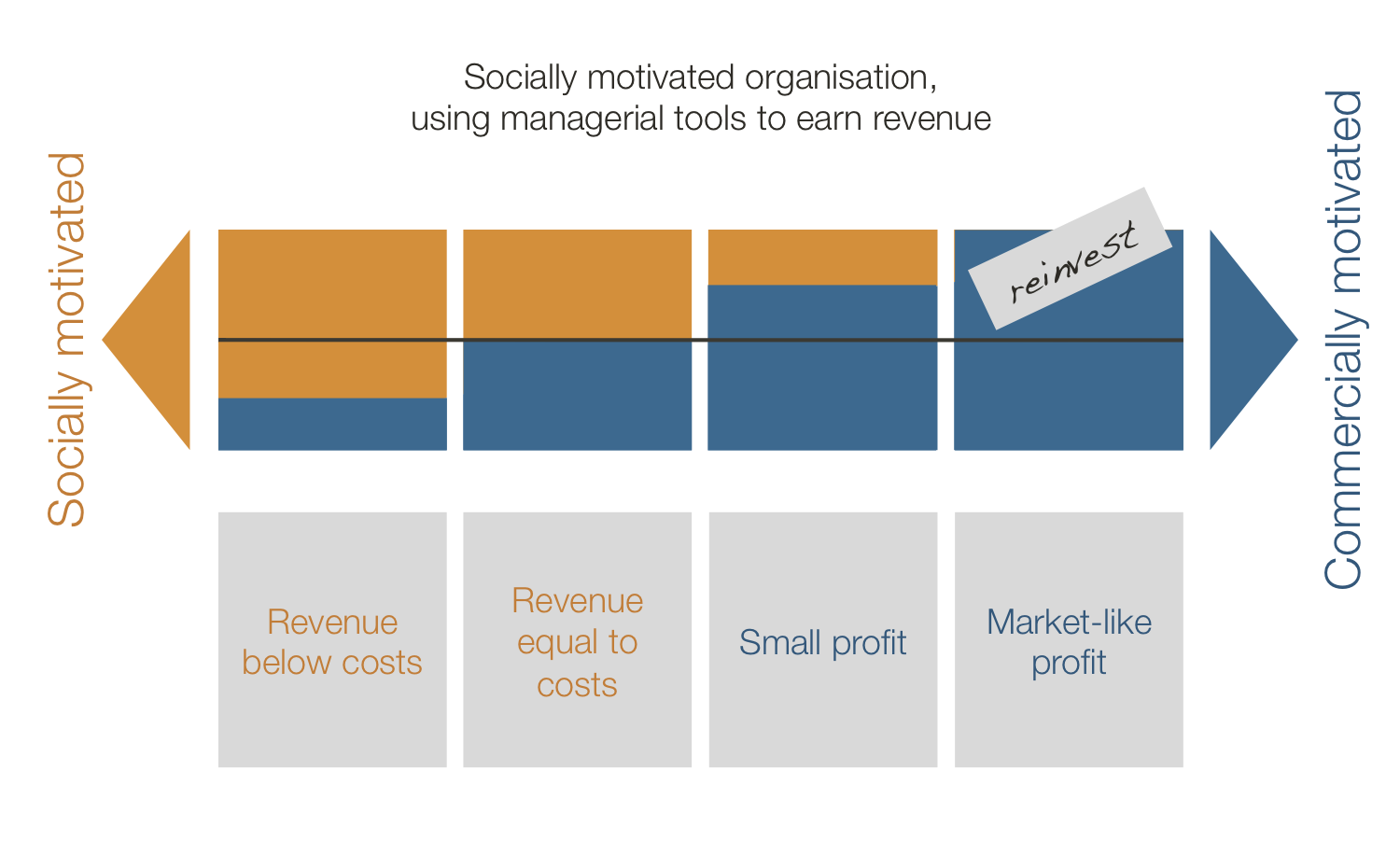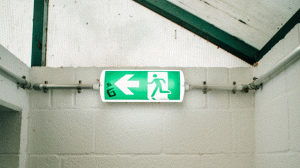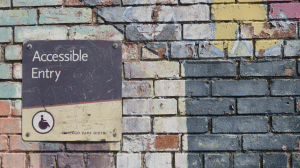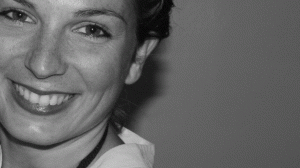I would like to show you four ways that you - yes, you - can become an impact investor. It doesn’t matter if you have $5 or $500,000, everyone can spend and invest their money in a way that generates real impact. But how?
Social investment is one tool to fund a social enterprise. Currently very few organizations work in that space in Germany, which makes it sound a bit inaccessible. In fact, just the term investment sounds overwhelming for many of us. But it shouldn’t be!
In order to break down some of those barriers, here is a little guide to show you how you can be part of it, no matter who you are.
Let’s start at the beginning
Before we talk about spending your money, let’s have a look at the nitty-gritty in terms of what we’re really talking about. ’Investment’ is the allocation of money with the assumption of financial returns in the future.
- Social Investment
- Social investment specifically refers to an investment with a mixture of social and financial returns. There are different portions of how much social and how much financial return a social enterprise can offer. In general, it is rare that a social enterprise can offer the same financial return as a for-profit business, especially in the early stages.
Social finance, in contrast to social investment, is the umbrella term. It also includes businesses that will not pay back the investment (e.g. a donation) or only the investment (also called 0% return). In the diagram below these are the left two boxes (see this article for more information).
 Basically all organizations that reach break even can raise social investment. All others can raise a form of social finance, which tends to come as grants and donations. Another option is the combination of donations/grants and investment, so called hybrid finance, which is open to all social enterprises on the spectrum.
Basically all organizations that reach break even can raise social investment. All others can raise a form of social finance, which tends to come as grants and donations. Another option is the combination of donations/grants and investment, so called hybrid finance, which is open to all social enterprises on the spectrum.
Recycle your donation
Giving is a great thing. But what if you can do good, and good, and good and good – all with the same money? Sounds too good to be true? Well, Kiva offers small loans to private people all around the world. The money comes from people like you and me. You can select what project you would like to support. Once the loan is repaid, you have the option to recycle that money for another loan. You can also choose to pay it out to your bank account to get it back, but that’s a bit beside the point here, isn’t it.
What you need: $25 is the minimum
What you get: No financial return. A social return, transparently reported on Kiva’s website. Social return again and again for the same money.
Make your current account count
For sure you have a bank account, right? The job of a bank is to invest this money, but do you know what they are investing it in? Many times the customer, you, doesn't actually know where it goes. What you might not realise is that your money might be involved in deals that create a negative social impact, e.g. weapons.
You can change that today by switching to a so-called “social bank”. They are also referred to as “ethical banks,” “alternative banks,” ‘sustainable banks’ or “banks with conscious”. The largest ones in Germany are GLS Bank, Umweltbank and Triodos. At GLS for example, you can select a category of businesses: from housing to green energy and your money will be used to invest into companies in that sector.
What you need: a bit of time to set up a bank account.
What you get: Usually a current account doesn’t give you a lot of interest. A social return through the banks reporting. You have more transparency over the money in your account and what it is used for.
Note: You can increase the effect when choosing a savings account or any other long-term product at a social bank.
The omnipresent crowdfunding
Have you ever been part of a “crowd”? This option is particularly interesting if you are looking to buy a product from a social business, whether that is a new Fairphone or a stylish Laptop Sleeve from Kancha. Both businesses crowdfunded the capital they needed to produce these goods, which means that you need some patience as it will take a while before you can hold the product in your hands. But it’s hard to know when someone will crowdfund for something you need, right now or in half a year. Also the return, if not the product itself, is often rather symbolic, like a coffee with the founder or a handwritten “thank you” note. There are platforms, where you get your money back, sometimes even with interest. It entirely depends on the platform. Startnext, for example, was specifically founded for ‘inventors, creative people and social entrepreneurs’.
Backing a crowdfunding campaign can enable a business to create a product that is in demand, long lasting and sustainable. A great opportunity to move away from pure consumerism!
Crowdfunding is especially used in the start-up phase, which makes your investment a bit risky but puts you in control of the creation and thus the impact. It is a great tool for the start-up to tie their customers to their brand.
The risk that the business might fail can be determined mainly through the product/service the company offers (unless you know the founder personally), but for the small amount you are investing together with many others - your personal risk vs. return looks pretty good.
What you need: minimum amount start at about 5-10 Euro, depending on the campaign.
What you get: you can support a business and make a start-up idea become reality. Often you will be listed as the first supporter and invited to opening events or other community events. The financial return you get depends on the platform you used. Often it will be the product, the start-up was looking to produce.
For the advanced investor
If words like bonds, shares and equity are familiar to you, it’s worth paying SharedImpact a visit. The website lists a large variety of investment deals in many countries, product types (bespoke bonds), and sectors. If you are looking to give a grant in Ukraine or for something related to education in India – you might find it here.
All organizations go through a due diligence process before being listed and you can pay directly on the website itself. But if you (understandably) are not a person who gives a large sum without knowing the receiver in person, SharedImpact can be a great database.
They also offer social enterprises to open an account within their donor advised fund. This is a vehicle that collects donations, allowing the donor an immediate tax benefit locally wherever in the globe they are donating to. SharedImpact then grants or invests the amount into the social enterprise under predefined conditions. This way a social enterprise can receive a loan for a low interest rate of e.g. 2% and avoid paying a normal bank interest, which the social enterprise usually can’t absorb. The donor can recycle the donation, similarly as mentioned above at Kiva, but on a higher level. This is a bit like mixing crowdfunding and kiva into one.
What you need and what you get: depends on the deal and the investment product you picked.
Two alternatives, which are not strictly impact investment
Simple giving
Are you concerned about the refugee crisis, want to help homeless people during the cold days or help a school rebuild their classroom in Nepal? That’s great to hear! There are many donation platforms out there. Many charge a membership fee or take a cut from the donation. The platform betterplace.org does neither and gives 100% of your donation to the project (they subsidize their service through the betterplace solutions).
A donation is great especially for organizations that don’t have any means to earn income. One thing you should always have in mind though, is that an organization needs to pay rent, their employees, and crazily enough even has phone bills. As the donor, you will have limited understanding of where your money helps the organization in the most meaningful way. If you make an unrestricted donation, the charity can allocate the money wherever it is needed most. Even if it’s a new laptop, because the old one broke last week. Remember that when you make your next donation in the mind-set of “but this should go directly to the kids in Nepal”. If you don’t allow the people to work most strategically in the charity to truly tackle the social issue, it doesn’t matter how much is actually reaching the beneficiary. We need to think about effectiveness of a charity as well. But don’t be small-minded if you can’t trace back your 10 Euro, because it went to the “big pot”. In fact the “big pot” might be more effective.
Also to note: a small but recurring donation is best. This allows the charity to plan ahead. Better give 10 Euro per month, instead of 120 Euro at Christmas.
Donations are often an important aspect complimenting investment into social enterprises, as social enterprises may have higher risks involved or entire business sections that don’t generate returns. The combination of donations and investments is called hybrid finance. The donations can e.g. be used as “first loss” capital reducing the risk of the full deal. It is easier to attract large amounts of investment with such a “safety cushion”.
What you need: money you will not get back
What you will get: Choose a charity that reports about their social impact transparently and you will know where your money went.
Cast your vote
The last alternative, which requires no money whatsoever: help a social initiative win a competition, also called “painless giving”. With a simple click of a button you can help a charity or social enterprise win - well, a lot of money! Currently one of the biggest competitions for social organizations is the Google Impact Challenge. In Germany the winner of the first prize, Mobile Retter, received 500.000 Euro.
Note: This technically is not considered social finance, but an easy and overlooked way to create impact by indirectly influencing financial decisions. https://impactchallenge.withgoogle.com/deutschland
And there you have it - four ways that you can become an impact investor. Now it’s up to you to put your money to good use.
About the Author

Laura Kromminga dedicated both her bachelor and master's thesis to the field of social entrepreneurship. Since 2012, she has been a member of MakeSense, a youth organisation that helps social entrepreneurs solve their challenges. Previously working for betterplace.org, Germanys largest donation platform, she witnessed the struggle of charities and social enterprises to raise funds. Her master's thesis compared the impact investment markets in Germany and the UK in order to find our how the German market could learn from its European neighbour.
Working for the Hybrid Finance Initiative of Ashoka in London, Laura captures and spreads her teams knowledge through case studies and articles on social finance.
For those interested in further reading, her published thesis can be found here. Follow her on Twitter here.
Originally published April 7, 2016










